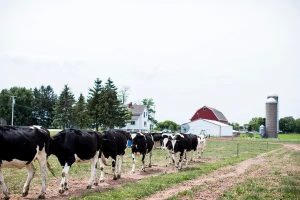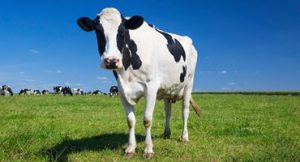
If there’s any assurance about the economic picture for the dairy industry and agriculture in general going forward in the next few years, it’s that volatility will be a constant. That’s according to David Kohl, PhD, Professor Emeritus in Agriculture and Applied Economics at Virginia Tech University, Blacksburg, Va.
Kohl recently told the audience of the Ag Outlook 2024 conference, hosted by eastern Iowa rural lender Hills Bank, that today’s agricultural realities of mostly low commodity prices, steep input costs, and higher interest rates are putting the squeeze on margins after a handful of profitable years.
He said the global economy is in a downturn, citing current recessions and/or stalled economies in China, Great Britain, and Germany. And in 2024, half of the world’s population will go through a national election, with India, Mexico, Russia, and the U.S. all in an election cycle that could dramatically affect global trade.
“One out of every 5 dollars in U.S. net farm income comes from exports, so disruptions in trade would most certainly affect U.S. farmers,” said Kohl. He also noted that the U.S. already has slipped to the status of “secondary supplier” in the world marketplace, in that Asia now seeks trade with the southern hemisphere first, and the U.S. as an alternate if their needs are not met.
How can agriculture prepare for the storm clouds that may roll in? Kohl borrowed a phrase from a fellow agricultural speaker, meteorologist Eric Snodgrass: “Don’t be scared, be prepared.”
His #1 piece of advice is to pile up cash reserves. Ideally, he advises working capital of 25% or more of annual expenses. He said the top 20% of U.S. farms have an average of 44% of their expenses in cash reserves, while the bottom 20% have only 11%.
“Equity doesn’t get you the loan,” he declared. And even though cash may be perceived as a stagnant asset, Kohl advised it also is invaluable in riding out red-ink years. “Higher expenses will outlast higher incomes. If we hit the skids on revenues, most farms can survive one year. But the ones with healthy cash reserves will be able to weather multiple years.”
And the worst thing you can do, according to Kohl: Take a look at your financials once a year when it’s tax time. “That’s a 1960s approach that doesn’t work anymore,” he stated. “At minimum, cash flows need to be evaluated quarterly, and preferably monthly.”
Other predictions for the next 2-5 years Kohl shared included:
- Females will play an increasingly active role in U.S. agriculture in the next 15 years and beyond.
- Declines in interest rates by the Federal Reserve will be slow and very measured.
- As a result, loan interest rates in the neighborhood of 6-8% should be expected.
- Green energy must be in the black without government subsidies to be practical. “We’re not there yet,” stated Kohl.
- “Greenlash” – or lashing back on the green energy movement, as is happening currently in Europe – may become a larger factor in the U.S.
- Land will remain a solid investment, and demand for land will be strong as Baby Boomers continue to purchase it.
- Technology and artificial intelligence will displace workers. But he noted technology adoption could be stalled due to a shortage of technicians to service it.
To stay ahead of the curve financially and plan strategically, Kohl recommended relying on the input of trusted advisors. “You need some assistant coaches on the bench to back you up,” he advised. “Sometimes it takes the perspective of an outside individual to help you set your vision.”
And, like a successful basketball team that religiously practices free throws, Kohl said farming excellence required dedication to the fundamentals – setting goals; formulating a plan; benchmarking performance; knowing your cost of production; monitoring cash flow; and continually striving to improve by 5% annually in your business, family, and personal life. “Success is about focusing on the fundamentals and basics,” he advised.
You can now read the most important #news on #eDairyNews #Whatsapp channels!!!
🇺🇸 eDairy News INGLÊS: https://whatsapp.com/channel/0029VaKsjzGDTkJyIN6hcP1K

























